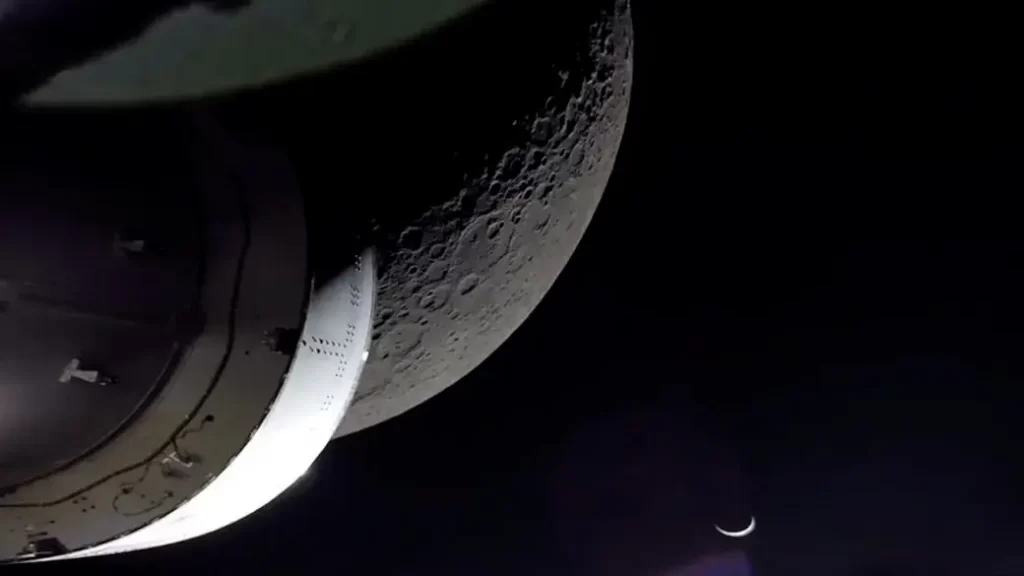NASA’s Artemis 1 Orion moonship returned to Earth on Sunday, slamming into the upper atmosphere at more than 24,000 mph and enduring a 5,000-degree re-entry inferno before landing in the Pacific Ocean with a picture-perfect splashdown to cap off a 25-day, 1.4-million-mile test flight to the moon and back. The unpiloted 9-ton Orion capsule gently landed on the water 200 miles west of Baja California at 12:40 p.m. EST, 20 minutes after encountering the first traces of a discernible atmosphere 76 miles up.
After splashdown, a US military helicopter and a group of fast boats approached the capsule for about five hours of inspections before Orion was hoisted on board a US Naval vessel for a trip to San Diego, California. The splashdown came less than a week after the capsule passed about 127 km (79 miles) above the Moon in a lunar flyby and about two weeks after it reached its farthest point in space, nearly 434,500 km (270,000 miles) from Earth.
Roughly 30 minutes before splashing down, the capsule committed to a fiery, 20-minute plunge into Earth’s atmosphere when it shed its service module in space, exposing a heat shield that reached peak temperatures of nearly 2,760 degrees Celsius (5,000 degrees Fahrenheit) during its blazing-fast descent.
“From Tranquility Base to Taurus-Littrow to the tranquil waters of the Pacific, the latest chapter of NASA’s journey to the moon comes to a close. “Orion, back on Earth,” said NASA commentator Rob Navias at the moment of Orion’s splashdown, referring to the Apollo 11 and 17 landing sites. Nelson also reflected on Apollo, saying President John F. Kennedy “stunned everybody with the Apollo generation” and said, “we were going to achieve what we thought was impossible.”

Unlike Apollo, which was born of the Cold War-era US-Soviet space race, Artemis is more science-driven and broad-based, enlisting other countries and commercial partners such as Elon Musk’s SpaceX and European, Canadian, and Japanese space agencies.


